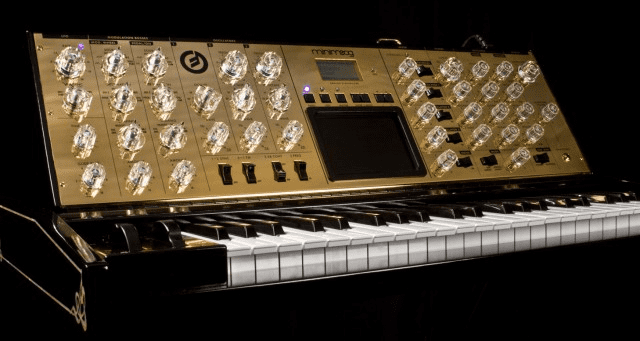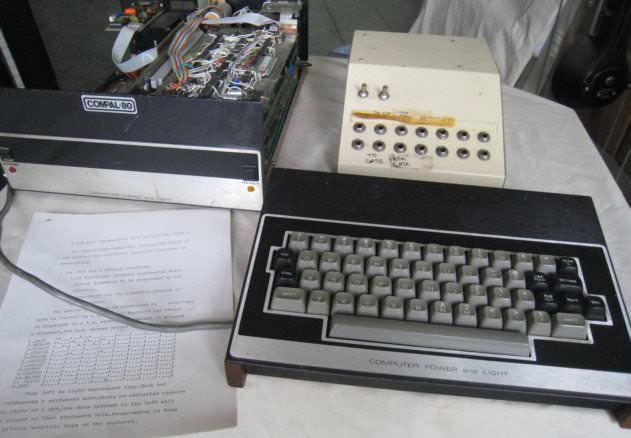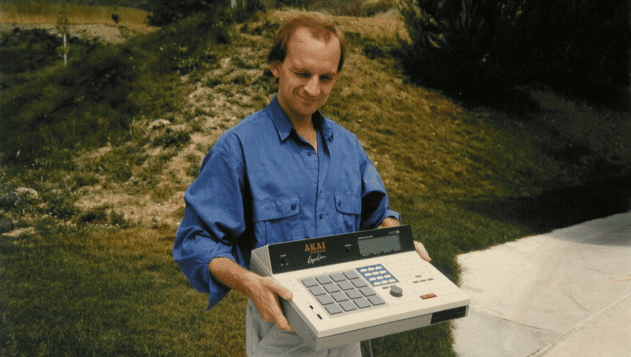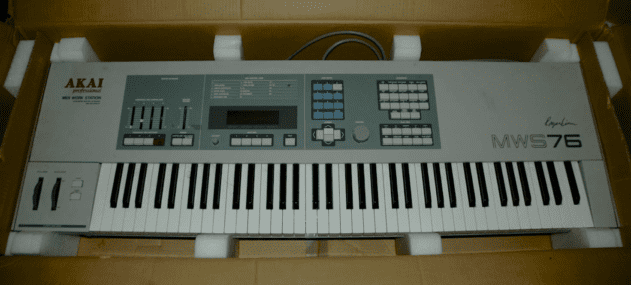Linn Programmable Drum Machine/Sequencer
Revolutionary prototype drum machine
Estimated value: £2,000+
If rarity is one of the deciding factors in determining the desirability of a vintage classic, surely the rarest items of all will be some of the most valuable: unique prototypes, hand-made one-offs and highly limited pre-production units. Sadly, for various reasons very few remain in existence. The same story comes up again and again. Dave Smith tells us he has “no idea” whether any prototypes of his classic Sequential Circuits synths still exist or where they might be, adding that he “never was much one for keeping things around”. Roland’s press department informs us that the prototypes of classics like the TR-808, TR-909 and TB-303 are “long gone”.
It’s logical in a way. By definition, engineers are interested in advancing and improving existing designs rather than archiving every step of the R&D process. The one exception to the rule is Roger Linn, who played a pivotal role in shaping the modern drum machine as we know it (as well as defining the modern sampling workstation with the Akai MPC60). Linn’s contributions to musical history are well documented (we’re a little biased, but we’d recommend reading our recent interview with Roger for some incredible insight into the way swing became a standard feature of all modern drum machines and DAWs). Just as importantly, many of Linn’s prototypes and development models remain intact.
Would Linn’s prototypes command high prices if they were to go on sale? Right now, probably not. As important as they are in terms of their contribution to the development of electronic music equipment – and, of course, music itself – there simply isn’t a significant collector’s market for this kind of historical artefact… yet. But we’re confident that’ll change as collectors begin to acknowledge the importance of electronic instruments.
One of Linn’s rare pre-production MidiStudio units (think of it as the missing link between the Linn 9000 and the MPC60) sold through Vemia for £1,019 in 2008. As Linn explains: “The MidiStudio was a production product that was never released because Linn Electronics went out of business before we could finish the software. It was basically intended to be a more reliable, better-designed replacement for the Linn 9000. If memory serves, we made six of them, one of which I have. Also, while I worked with Akai they produced a product called the MWS76, which was basically a MIDI keyboard controller with an ASQ10 Sequencer in it. I’ve got one of those around somewhere too.”
But as important as Linn’s later products were, we need to go back to the early days of his career to find the prototype which had the biggest impact on the way we all make music today. Many of the features of the revolutionary LM-1 were developed using a prototype model Linn referred to as the Programmable Drum Machine/Sequencer. “It permitted programming your own drumbeats [like the LM-1] but used analog and not sampled sounds,” Linn explains. “It also permitted programming monophonic sequences for playback on an external analog synthesizer. It consisted of an early computer called a COMPAL-80 running an Intel 8080 at 1.87 MHz. Inside the computer is my custom PC board providing trigger signals to the external beige box, which contained an analog drum sound generator board from an early Roland drum machine, as well as control voltage and gate jacks for use with an external analog synth. I wrote the operating program in BASIC and 8080 assembly language, which permitted me to poke little stars onto a screen grid with rows representing various drums and columns representing 16th-notes.”
Wait a minute. Analogue drums, cutting-edge sequencing options and the option to sequence a monophonic synth part? That sounds a lot like a Tempest. “Yeah, I guess you could call it Tempest very, very Lite!” Linn jokes. “I only made three: one for me, one for Leon Russell and a third that was lent to a friend and stolen. My unit now rests somewhere in the Cité de la Musique in Paris.” It is, however, most definitely a museum piece rather than a useable instrument. “I’m sure it can no longer be turned on and the program loaded from cassette storage, if the cassette hasn’t decayed.”
At this stage in history, Linn’s prototypes are best considered influential rather than necessarily valuable. Their potential market value will undoubtedly increase over the coming decades. However, as far as prototypes go, no drum machine will ever be able to match the prototypes of a certain synth in terms of impact on electronic music, desirability and potential market value…




07.09 AM
Fantastically thorough look into the value behind mouth-watering gearporn. Now time to start saving… ;-(
01.26 PM
Didn’t herbie hancock demo that Fairlight sampler on Sesame Street
01.30 PM
He certainly did, alongside a young Tatyana Ali (Ashley from The Fresh Prince Of Bel Air): http://www.youtube.com/watch?v=oKoisNv1ftw
This video of him showing it off to Quincy Jones is also excellent: http://www.youtube.com/watch?v=n6QsusDS_8A
02.35 PM
no Waldorf Wave?!
02.44 PM
The Wave’s definitely right up there with the best of them.
It’d be great to hear all your thoughts on this from a practical perspective too. As amazing as, say, a CS-80 is, would it necessarily be at the top of your shopping list if you won the lottery? We’ve got a feeling a lot of producers are probably more interested in slightly more affordable classics when it comes to actually making music…
12.09 PM
What about the GX1?
05.01 PM
I enjoyed this article as I continue to with Attack’s interviews and insightful cultural articles..
In addition to the vintage/analogue gear, I’d add some modern controllers to the list which have huge expressive capabilities not available on the mass market, such as polyphonic pitchbend and sensing on multiple axes. For example, the Haken Continuum is US$5,290 (without its case or stand). The newly-introduced ROLI Seaboard Grand is US$8,888.88. Those are the prices of decent used cars.
The CS-80 is an curious example of how performance controllers have regressed in some ways in the decades to come. How it takes something like an Arturia Origin (itself US$3,000) to include all those kinds of controllers. Not as much of a price delta change as you’d expect, given progress with home computers.
While some contemporary tech like touchscreens thrive (tablet market demand, thanks iPads!) and the DJ market has seen interesting plays (Maschine’s rise despite doubters re: the Akai dynasty), more specialized-to-music stuff languishes or is still available at very high prices. I figure there needs to be more popular education for new instruments to resolve part of this chicken-and-egg Gordian knot — otherwise most people, clinging onto the familiar piano form, are too scared to transition to it, keeping prices high.
02.44 PM
Great point, Torley. Things like the Continuum and Seaboard are very niche products, but to a certain type of performer or musician they’re truly desirable – partly because there aren’t many alternatives at any price point.
But you also hit on another interesting point. The touchscreen revolution led by the iPad virtually destroyed another product – JazzMutant’s Lemur controller, which eventually returned, slightly ironically, as an iOS app. And that trend for premium products to be replaced by cheaper alternatives is definitely mirrored in other markets – Maschine undercutting the MPCs, Moog introducing the Sub Phatty and dropping the Little Phatty, and so on (that’s without mentioning software, of course).
There really aren’t actually many super high-end synths around any more. There are products like the Prophet 12, SE CODE, Voyager XL, etc, but while the market for budget (<£500) and mid-range (£500-1000) synths seems to be thriving, anything larger is a much riskier proposition for any company.
Dave Smith acknowledged in our interview that the numbers today are much smaller, and that's despite the fact that synths are much cheaper in real terms than they were back in the 70s. Even with today's advances, the question of whether the market for a truly expressive, powerful performance-based synth in the vein of the CS-80 would still exist is open to debate.
03.17 PM
No GXs? No paper face Serge or Music Easel ? No Wave? No Fenix? And no Synthi 100?
12.54 PM
EMS?
05.01 AM
Wow! My CS-80’s “Slave to the Bass” video is posted here. (Blushes). It is a magnificent instrument. I used to sit in front of PBS Cosmos with Carl Sagan for a mind melding experience in the early 80’s after school. Our console TV had a good 6×9 speaker. Never expected to find a CS-80 of my own. I do not believe 2000 were ever made. So far, all functional CS-80’s are between serial numbers 1000-1800. It is believed that less than 800 were made. Cost prohibitive. There are 45 circuit boards, stuffed to the gills. Over 1200 internal trim pots to calibrate.
08.05 PM
https://www.youtube.com/watch?v=5esV1RiIB8o